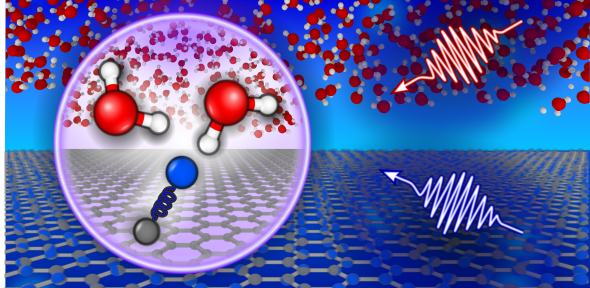
Water exhibits several remarkable properties at the nanoscale, most prominently its friction on graphitic surfaces. These experimental observations have advanced the field of nanofluidics by offering solutions to problems in water desalination and energy harvesting. Although these experiments have prompted a substantial research effort—both experimental and theoretical—water-carbon friction has remained a major puzzle and our fundamental understanding is still very much lacking.
A recent theoretical framework—quantum friction (QF)—proposes to resolve these experimental observations by considering non-adiabatic coupling between dielectric fluctuations in water and graphitic surfaces. In our work, “Classical quantum friction at water-carbon interfaces”, using a classical model that enables fine-tuning ofthe solid’s dielectric spectrum, we provide evidence from simulations in general support of QF. As features in the solid’s dielectric spectrum begin to overlap with water’s librational and Debye modes, we find an increase in friction in line with that proposed by QF. At the microscopic level, we find that this contribution to friction manifests more distinctly in the dynamics of the solid’s charge density than that of water. Our findings suggest that experimental signatures of QF may be more pronounced in the solid’s response rather than liquid water’s.
You can read the paper here:
